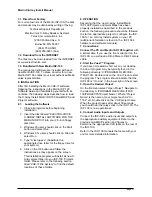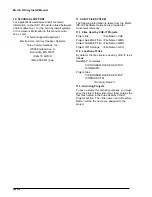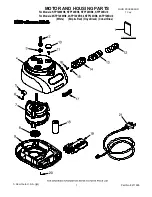
Merlin X-Array Install Manual
page 6
3.2.1. Xi-1153/64 and Xi-1183/64 Normal Three-
way vs Overlap (Dipole) Three-way
Operation
Figure 1 shows the beamwidth and directivity of the
single-woofer three-way systems operating in the
normal three-way configuration.
Figure 2 shows the data for the same systems
operating in overlap mode.
Discounting slight variations due to measurement
repeatability, Figures. 1 and 2 show that the
horizontal beamwidth is essentially the same for
both operating modes. The main effect of the
overlap is a significant reduction in vertical
beamwidth between 160 and 800 Hz. Maximum
reduction occurs between 250 and 500 Hz, where
the beamwidth decreases by factors of about 1.4 to
2. Correspondingly, an increase in directivity
ranging from 0.5 to 2.5 dB is noted over the same
range for the overlap condition.
3.2.2. Xi-2153/64 and Xi-2183/64 Normal Three-
way vs Overlap (Tripole) Three-way
Operation
Figure 3 shows the beamwidth and directivity of the
dual-woofer three-way systems operating in the
normal three-way configuration. Figure 4 shows
the same systems operating in overlap mode.
As with the previous data, no significant difference
is noted in horizontal beamwidth. The vertical
beamwidth however, decreases significantly
between 160 and 800 Hz, reaching nearly 2 to 1 at
400 Hz. Some reduction in beamwidth is actually
noted at 80 Hz. Directivity increases by nearly 3 dB
between 315 to 630 Hz for the overlap mode.
= HORIZONTAL
= VERTICAL
FIGURE 3 -
FIGURE 4 -
FIGURE 2 -
FIGURE 1 -





































